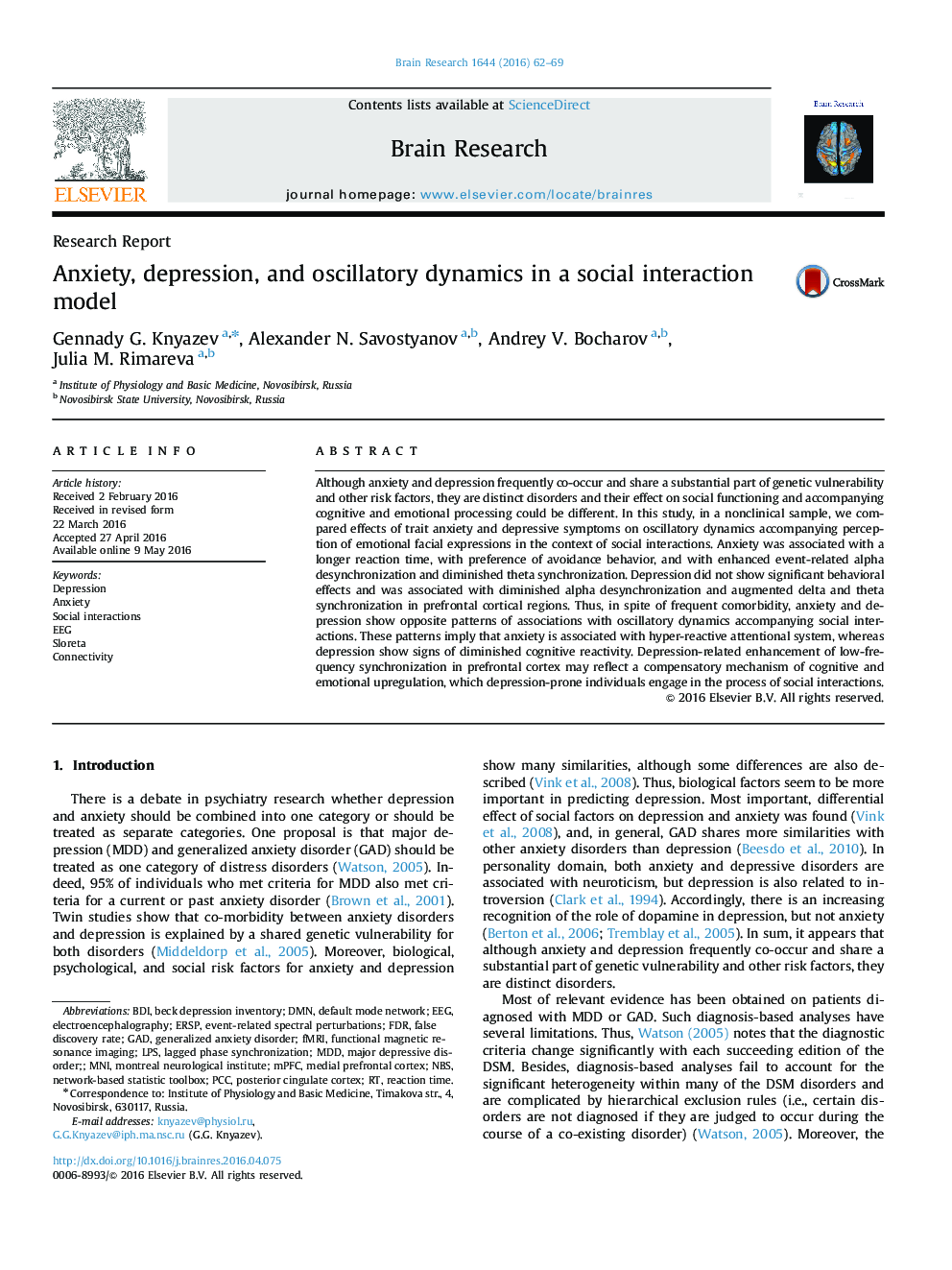| کد مقاله | کد نشریه | سال انتشار | مقاله انگلیسی | نسخه تمام متن |
|---|---|---|---|---|
| 6262448 | 1613798 | 2016 | 8 صفحه PDF | دانلود رایگان |
- Anxiety and depression frequently co-occur and share many risk factors.
- EEG was registered in a nonclinical sample during social interactions with virtual 'persons'.
- Anxiety and depression showed opposite patterns of associations with oscillatory dynamics.
- Anxiety is associated with hyper-reactive attentional system.
- Depression show signs of diminished cognitive reactivity.
Although anxiety and depression frequently co-occur and share a substantial part of genetic vulnerability and other risk factors, they are distinct disorders and their effect on social functioning and accompanying cognitive and emotional processing could be different. In this study, in a nonclinical sample, we compared effects of trait anxiety and depressive symptoms on oscillatory dynamics accompanying perception of emotional facial expressions in the context of social interactions. Anxiety was associated with a longer reaction time, with preference of avoidance behavior, and with enhanced event-related alpha desynchronization and diminished theta synchronization. Depression did not show significant behavioral effects and was associated with diminished alpha desynchronization and augmented delta and theta synchronization in prefrontal cortical regions. Thus, in spite of frequent comorbidity, anxiety and depression show opposite patterns of associations with oscillatory dynamics accompanying social interactions. These patterns imply that anxiety is associated with hyper-reactive attentional system, whereas depression show signs of diminished cognitive reactivity. Depression-related enhancement of low-frequency synchronization in prefrontal cortex may reflect a compensatory mechanism of cognitive and emotional upregulation, which depression-prone individuals engage in the process of social interactions.
Journal: Brain Research - Volume 1644, 1 August 2016, Pages 62-69
